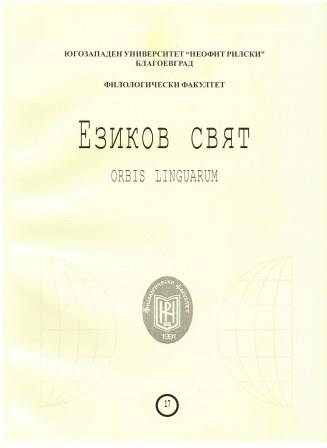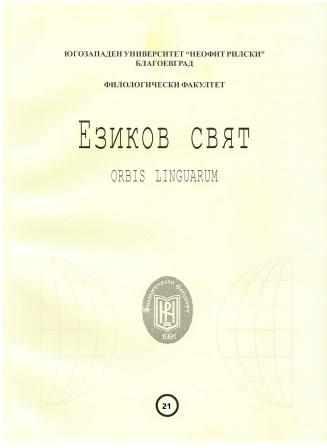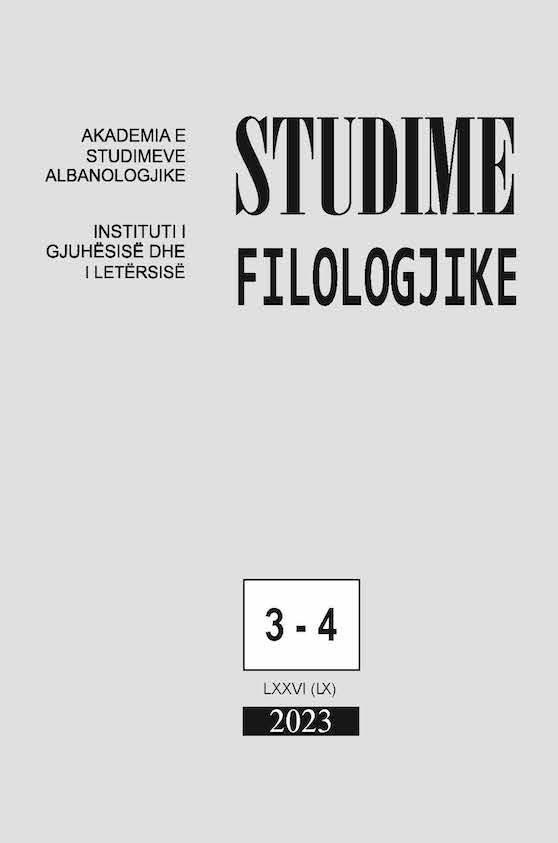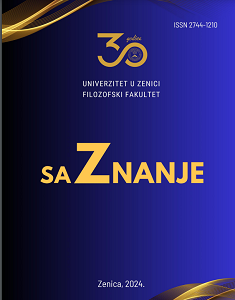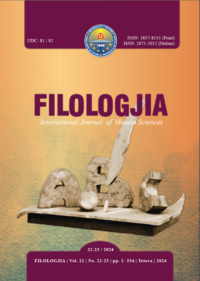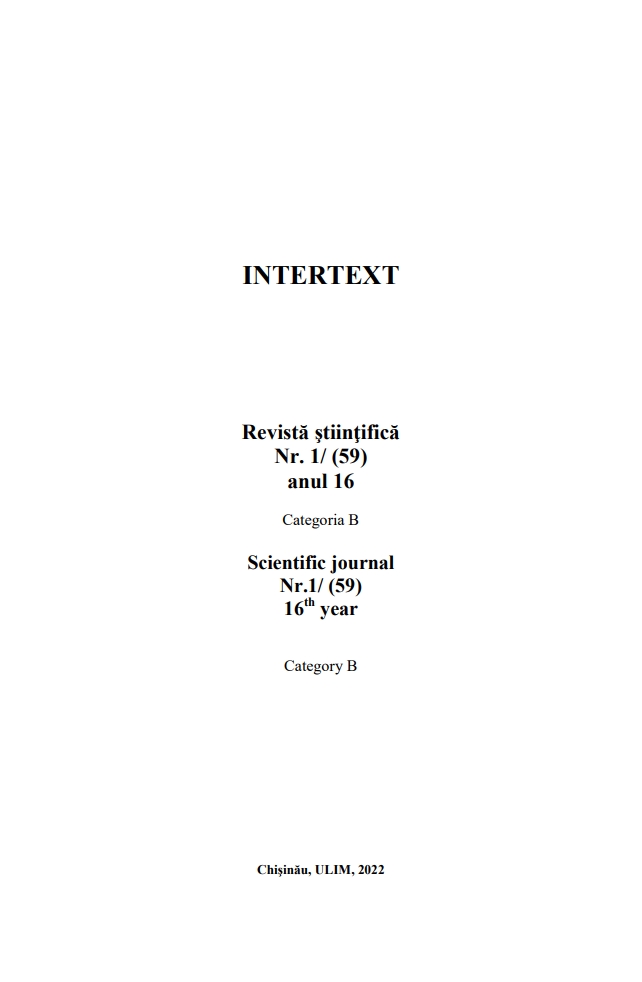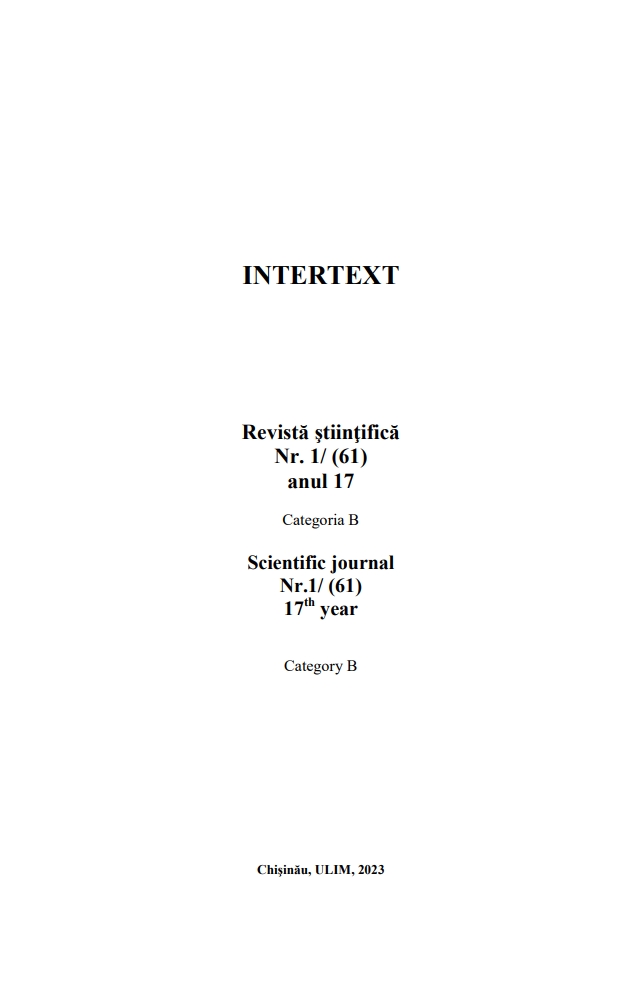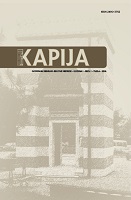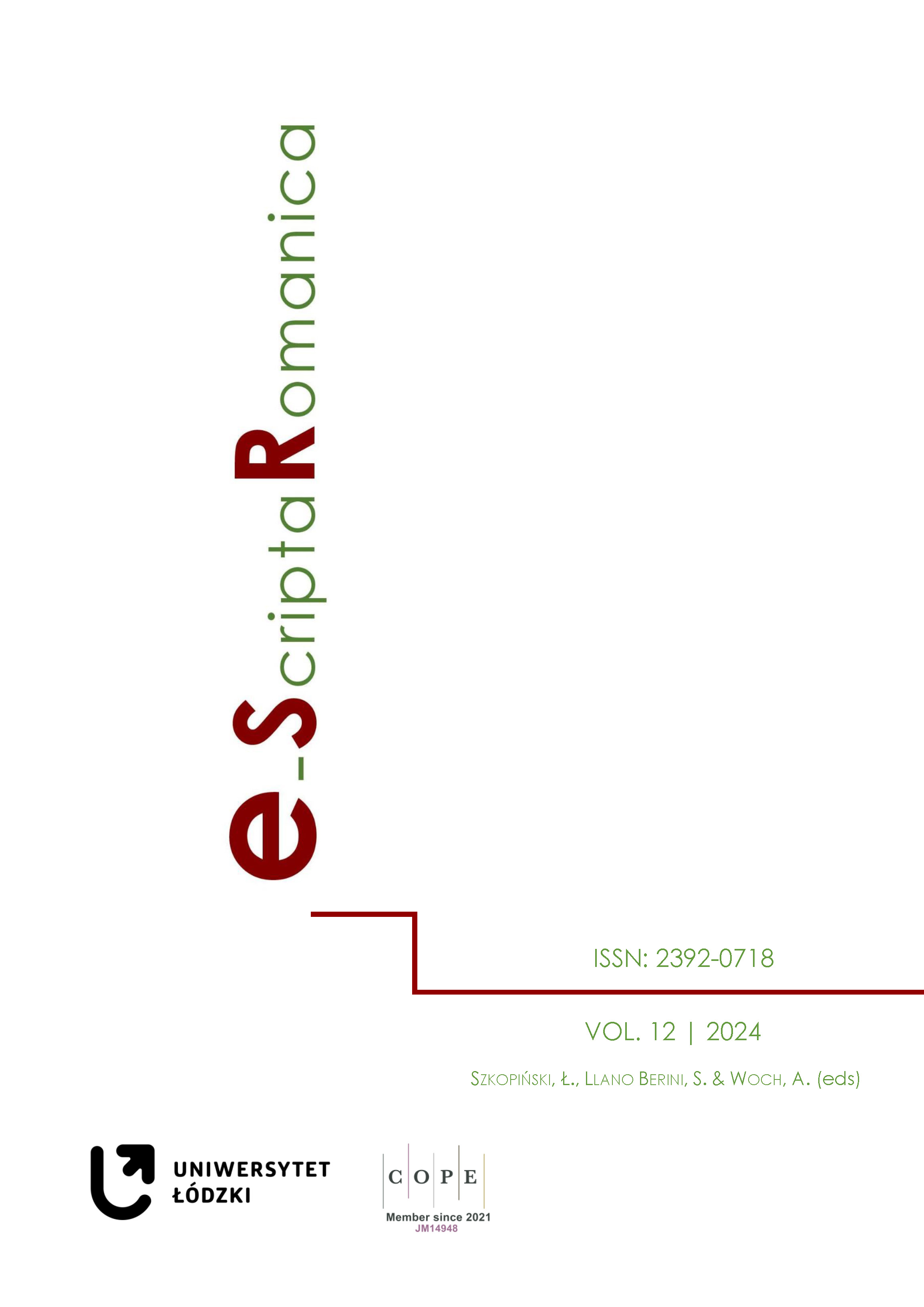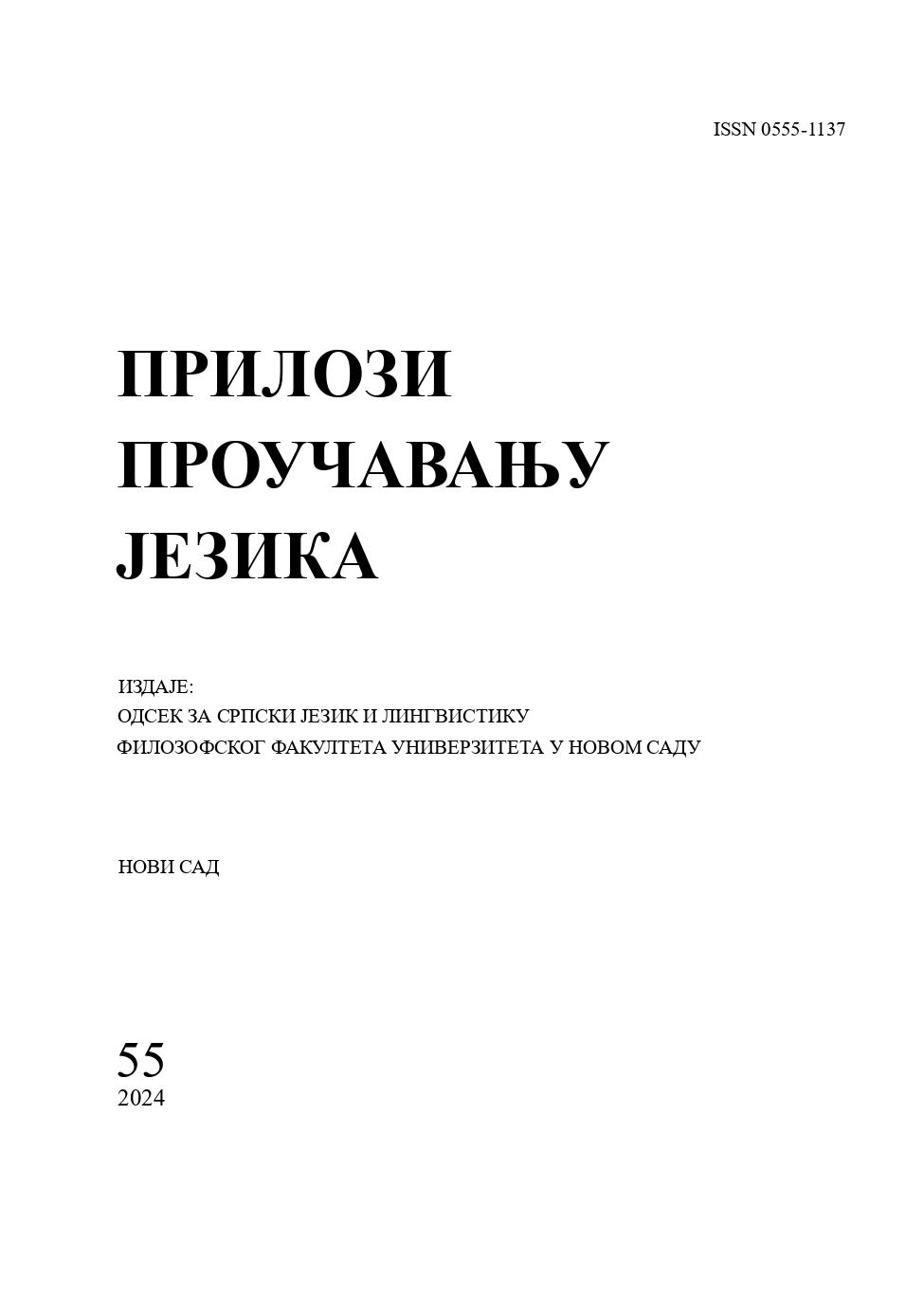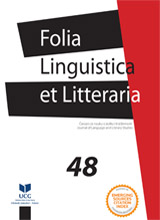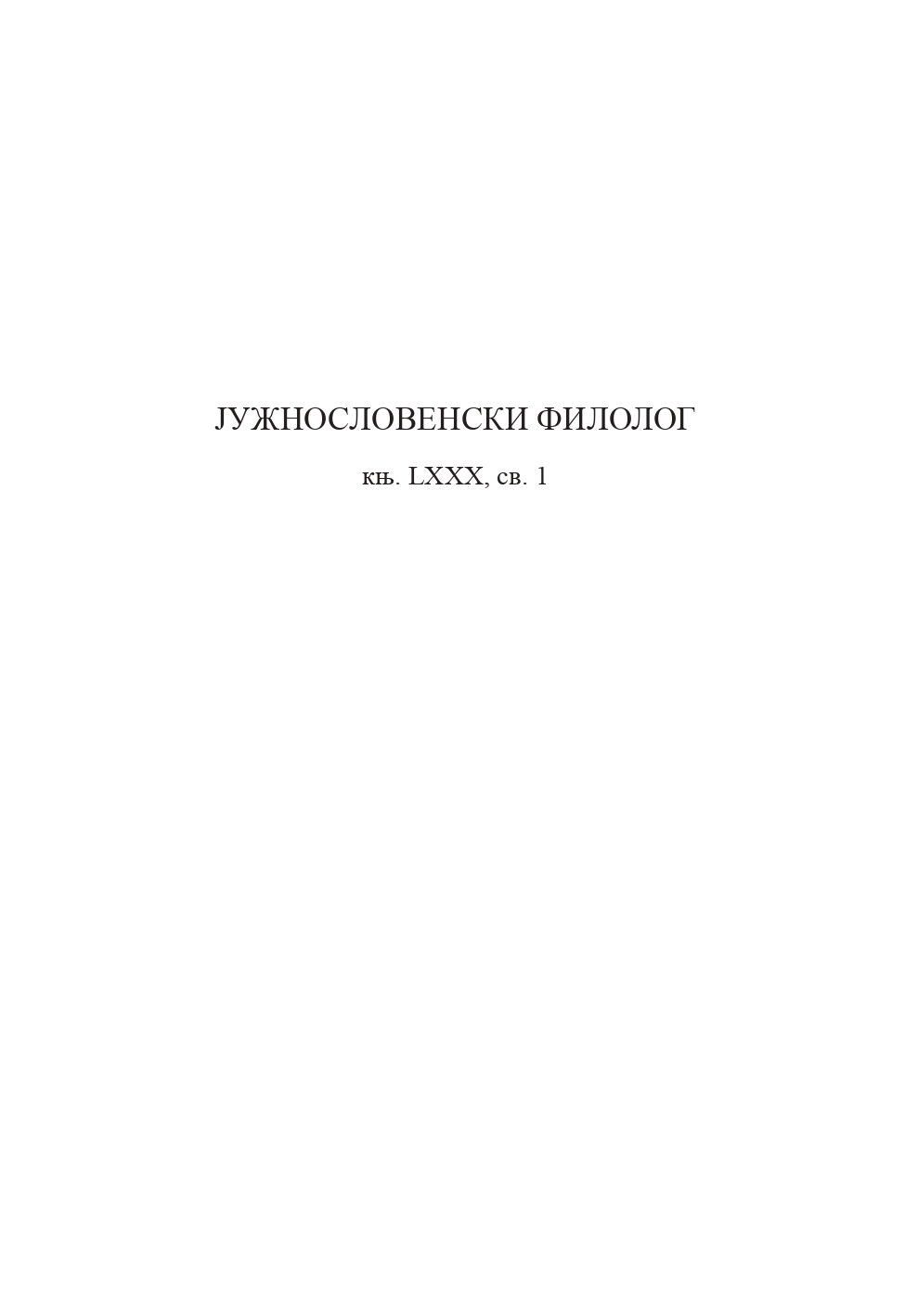Author(s): Marija Perić-Šormaz,Elena Kiprovska Knežić / Language(s): German
Issue: 48/2024
Phraseology is an integral part of every culture and a valuable element of linguistic heritage. It includes complex vocabulary units that serve as verbal cultural signs. Phrasemes are often very old and reflect myths, customs, traditions, legends, symbols, and ideologies of a culture (Bock and Manerowa 2019, 43; Bralić 2011, 171). To describe culture in phraseology, we must distinguish between the cultural basis and cultural specifics. The cultural basis refers to culture in a broad sense, i. e. most phrasemes are culture-based and cannot be understood without specific cultural knowledge. Cultural specifics require a cross-linguistic perspective, i. e. a phraseme can only be considered culture-based if it is contrasted with other languages (Piirainen 2007, 209). Furthermore, phrasemes are frequently used in various types of discourses. Political discourse refers to the intertextual construction in official communications from politicians, while media discourse is intertextually constructed in articles by journalists. Both politicians and journalists express their positions through direct (overt) and indirect (mitigated) linguistic means, which can be either objective or subjective (Škevin Rajko and Grgić Maroević 2018, 105). Phrasemes are fixed combinations of words, i. e. they consist of at least two words with their own meanings, and they are known to native speakers in exactly this combination (Burger 2010, 11; Burger 2002, 392; Bock and Manerowa, 2019, 45; Fleischer 1982, 34; Casadei 1996, 13). Phrasemes have following characteristics: polylexicality, stability, and idiomaticity, and they are divided into phrasemes in the broader or narrower sense according to the characteristics they exhibit. Phrasemes in the broader sense are characterized by their polylexicality and stability. This means that they consist of more than one word and that this combination of words is often used in exactly this form (such as collocations) (Burger 2010, 14; Burger et al. 2007, 2). Phrasemes in the narrower sense are also characterized by their idiomaticity, i. e. the components form a unity that cannot be fully explained by the syntactic and semantic rules of connection (Burger 2010, 14). Depending on the degree of idiomaticity, phrasemes are described as fully or partially idiomatic. Partially idiomatic phrasemes retain a component of their free meaning – for example, the phraseme einen Streit vom Zaun brechen is idiomatic with respect to the component vom Zaun brechen, while the component einen Streit has its lexical meaning. On the other hand, fully idiomatic phrasemes do not retain any component of their free meaning – Öl ins Feuer gießen has the phraseological meaning of making something worse (Burger 2002, 392; Burger 2007, 90; Burger 2010, 14, 30; Cacciari and Tabossi 1988, 668). Furthermore, phrasemes can be classified according to different criteria. On the one hand, they are divided according to the parts of speech into substantive, adjectival, verbal, etc. phrasemes (Skog-Södersved 2007, 269). On the other hand, according to the sign function in communication, they are divided into referential, structural and communicative phrasemes. Referential phrasemes refer to aspects of reality, such as objects, events or facts (e. g. schwarzes Brett, jmdn. übers Ohr hauen, Morgenstund hat Gold im Mund). Structural phrasemes serve to establish grammatical relationships between words (e. g. in Bezug auf, sowohl – als auch). Communicative phrasemes or routine formulas have specific functions in the creation, definition, execution and termination of communicative actions (e. g. Guten Morgen, ich meine) (Burger 2010, 36). The functions of phrasemes are diverse. Some phrasemes are particularly conspicuous components of texts because, like metaphors, they are encoded in a double way. This means that they are mentally represented both verbally and non-verbally. Imagery is an important aspect of phrasemes and contributes to their connotative and stylistic effect, which also makes them easy to remember (Elspaß 2007, 288). It has been found that most phrasemes are not functionally or pragmatically fixed in terms of their use in practice, but rather represent pragmatically neutral constructions (Burger, Buhofer and Sialm, 41 in SkogSödersved 2007, 270). According to Koller (2007, 69), phrasemes have a “potential function” because the actual function is decided by the context (Skog-Södersved 2007, 271). Furthermore, Palm (1997) and Burger (2003) categorize phrasemes according to different style levels: over-neutral (Roma aeterna), neutral (zu Boden sinken), under-neutral (Rotz und Wasser heulen) and vulgar (zum Kotzen (sein)) (Sandig 160). According to Fleischer (1987, 52), it is important to take into account the interplay between the functions of word formation constructions and phrasemes in order to view the complex issue from a more differentiated perspective (Skog-Södersved 2007, 270). The most common functions of the phrasemes researched in the literature are evaluation (Burger 2003, Burger 2007, Skog-Södersved 2007, Sandig 2007), emotion and expressivity (Skog-Södersved 2007, Rothkegel in Sandig 2007, Duhme in SkogSödersved 2007), argumentation (Skog-Södersved 2007, Koller 2007, Lüger 2001), manipulation (Burger 1987, Skog-Södersved 2007), humour (Norrick 2007), intensification, and euphemism (Fleischer, Michel and Starke in Sandig 2007, 160). Phrasemes have the ability to express the speaker's attitude, meaning they can be positive, negative or ambivalent (Burger 2003, Sandig 2007, 160). Burger (2003, 16-18) argues that serious journalists use phrasemes consciously and that these are not only important for the overall structure of the text, but that they also enable journalists to express their personal opinions and evaluations in some way (Skog-Södersved 2007, 271). Phrasemes can be used for expressive purposes to evoke or express emotions in both the recipient and the text producer (Skog-Södersved 2007, 272). Burger (1987) examines clarity and argumentation saving functions in mass media (Skog-Södersved 2007, 271). Lüger (2001, 70-71) states that phrasemes can primarily act to qualify linguistic actions, to type or evaluate facts, and to establish or justify higher-level actions. Burger (1987, 22) emphasizes that it would be wrong to describe phrasemes in the mass media as manipulative, since they have a rhetorical function in the press and are not necessarily manipulative, as their use varies in newspaper articles and other types of text (Skog-Södersved 2007, 271-272). Because of their familiarity and stability, phrasemes can be ideal for generating humour in various forms of discourse such as conversations, jokes, and comics (Norrick 2007, 302). Phrasemes often express intensification, vividness, expressivity and euphemism (Fleischer, Michel and Starke 15-17 in Sandig 2007, 160). Normally, texts in print media have the primary function of conveying information and providing entertainment, so phrasemes also contribute to these functions (Skog-Södersved 2007, 270). Position within a text can influence how significant or effective phrasemes are. According to the positioning of the phrasemes, they can have different functions, i. e. (1) phrasemes as holders at the beginning of a text have the function of emotionalizing and arousing curiosity (e.g. a headline), (2) phrasemes as brackets at the beginning and at the end of the text complement the text by making it thematic or aesthetic or round it off persuasively and (3) phrasemes as a hinge, whereby two different parts of a text are mirrored and tied together (Rothkegel 240-242 in Sandig 2007, 168). This article analyses the use of phrasemes in German and Italian during the war in Ukraine. The goal is to identify the similarities and differences in the use of phrasemes in both languages. For this purpose, phrasemes were extracted from the newspapers Der Spiegel and La Repubblica. The corpus covers the time frame of the first two weeks after Russia's attack on Ukraine (from February 24, 2022 to March 10, 2022). It is believed that phrasemes can have an appeal to readers due to their figurative nature. For this reason, no nonidiomatic phrasemes were taken into account, only fully and partially idiomatic ones. The research examines what functions phrasemes fulfil and who uses them. In addition, the number and type of phrasemes in the articles about the conflict in Ukraine was determined and the differences and similarities between the two languages were compared. Since phrasemes can fulfil different functions, the functions of phrasemes are selected here according to the type of discourse. The media discourse and the topic “War in Ukraine” limit the use of phrasemes, i. e. the phrasemes in media discourse attract attention and arouse curiosity, but they are not used humorously in this type of discourse. Accordingly, this article considers the functions of evaluation, emotion, argumentation, intensification, euphemism, and irony. In the corpora it was found that most German phrasemes are fully idiomatic (89%) (e.g. ans Licht kommen, in jmds. Hände fallen, Nummer eins, Öl ins Feuer gießen), while the Italian ones are more divided - 58% fully idiomatic (e.g. cadare in mano, a caldo, mettere in ginocchio) and 42% partially idiomatic (allargarsi a macchia d'olio, farsi beffe di qualcuno, cessare il fuoco). Some phrasemes were repeated several times in the corpora - in the German corpora these are auf dem Spiel stehen, auf dem Tisch liegen, auf den Weg bringen, auf eigene Faust, auf ein neues Glas setzen, auf Eis liegen, aufs Spiel setzen, der Ball liegt bei jmdm., die Stirn bieten, einen kühlen Kopf bewahren, Farbe bekennen, grünes Licht geben, im Stich lassen, in die Hände spielen, in jmds. Hände fallen, ins Mark treffen, ins Spiel kommen, ins Visier nehmen, Nummer eins and Wenn und Aber, and in Italian cadere nelle mani di qualcuno and fare presa. In both corpora, the phrasemes were frequently used in direct and indirect quotations, with journalists using phrasemes more frequently in German than in Italian. In the German corpora, the phrasemes were used in direct and indirect quotations in 55% of the articles, with the phraseme being used by a journalist in 45% of the articles. In contrast, in Italian corpora, 62% of phrasemes were used by journalists and 38% in direct and indirect quotations. It can be concluded that in the German corpus, the phrasemes were used more often by journalists than by politicians, while in the Italian corpus the usage is uniform. In both corpora, most phrasemes were used in the middle of the article, 77% in German and 40% in Italian. At the beginning and end of the article, 12% of the phrasemes were used in German (8% at the beginning and 4% at the end) and 52% in Italian (35% at the beginning and 17% at the end). In German, 11% of the phrasemes were in a title or subtitle, whereas in Italian this was true of 8% of phrasemes. The functions are similarly evenly distributed in both languages: the most common function of phrasemes is evaluation (60% of German and 39% of Italian phrasemes), followed by intensification (15% of German and 23% of Italian phrasemes), euphemism (14% of German and 20% of Italian phrasemes), argumentation (6% of German and 6% of Italian phrasemes) and emotion (5% of German and 12% of Italian phrasemes). There are no phrasemes with the function of irony. The phrasemes with the function of evaluation include e.g. in German Nummer eins, Klartext sprechen, die Stirn bieten, and auf dem richtigen Weg, and in Italian forzare la mano, mettere in gioco, pagare a caro prezzo, and doccia scozzese. The phrasemes with the function of intensification include. in German Wenn und Aber, Spitze des Eisbergs, das Blaue vom Himmel versprechen, and um jeden Preis, and in Italian partire in picchiata, arrivare alle stelle, allargarsi a macchia d'olio, and in un lampo. The phrasemes with the function of euphemism in German include auf Eis legen, außer Gefecht setzen, fest in jmds. Hand sein, and jmdn. zu Fall bringen, and in Italian cadere in mano, mettere in ginocchio, piovere sul bagnato, and cessare il fuoco. The phrasemes with the function of argumentation in German are, for example, jemandem/ einer Sache den Hahn zudrehen, grünes Licht geben, and der Teufel steckt im Detail, and in Italian molta acqua è passata sotto i ponti, a faccia a faccia, and cantare vittoria. Finally, the phrasemes with the function of emotion in German include das Herz zerrissen, and einen kühlen Kopf bewahren, and in Italian girare le spalle, and mettersi nei panni di qualcuno. In summary, the situation in Europe, especially the war and everything involved in it, is often assessed through the use of phrasemes. These opinions are often reinforced, intensified, and depicted graphically. Phrasemes are used to express emotions and mitigate the negative effects of war. Therefore, phrasemes also fulfill the function of euphemisms. Political statements made by politicians or political journalists often resonate loudly because of their use and intended purpose, which is to reach the ears, hearts, and souls of their listeners or readers. Language plays an enormous role in this context for politicians and political journalists, as it represents the most important tool for successfully or less successfully convincing audiences that what they say and represent is true, honest, good or for the best. Furthermore, phrasemes consciously or unconsciously influence public opinion and shape it depending on the expected reception and perception of the reader or listener.
More...
